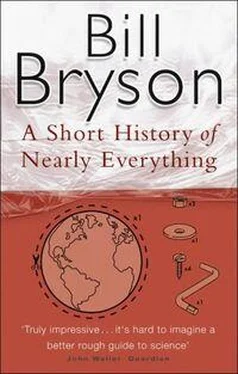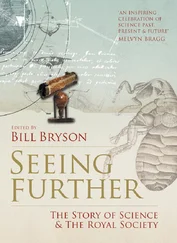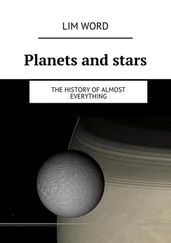So I decided that I would devote a portion of my life-three years, as it now turns out-to reading books and journals and finding saintly, patient experts prepared to answer a lot of outstandingly dumb questions. The idea was to see if it isn’t possible to understand and appreciate-marvel at, enjoy even-the wonder and accomplishments of science at a level that isn’t too technical or demanding, but isn’t entirely superficial either.
That was my idea and my hope, and that is what the book that follows is intended to be. Anyway, we have a great deal of ground to cover and much less than 650,000 hours in which to do it, so let’s begin.
PART I LOST IN THE COSMOS
They're all in the same plane. They're all going around in the same direction… It's perfect, you know. It's gorgeous. It's almost uncanny.
Astronomer Geoffrey Marcy describing the solar system.
1 HOW TO BUILD A UNIVERSE
NO MATTER HOW hard you try you will never be able to grasp just how tiny, how spatially unassuming, is a proton. It is just way too small.
A proton is an infinitesimal part of an atom, which is itself of course an insubstantial thing. Protons are so small that a little dib of ink like the dot on this i can hold something in the region of 500,000,000,000 of them, rather more than the number of seconds contained in half a million years. So protons are exceedingly microscopic, to say the very least.
Now imagine if you can (and of course you can’t) shrinking one of those protons down to a billionth of its normal size into a space so small that it would make a proton look enormous. Now pack into that tiny, tiny space about an ounce of matter. Excellent. You are ready to start a universe.
I’m assuming of course that you wish to build an inflationary universe. If you’d prefer instead to build a more old-fashioned, standard Big Bang universe, you’ll need additional materials. In fact, you will need to gather up everything there is-every last mote and particle of matter between here and the edge of creation-and squeeze it into a spot so infinitesimally compact that it has no dimensions at all. It is known as a singularity.
In either case, get ready for a really big bang. Naturally, you will wish to retire to a safe place to observe the spectacle. Unfortunately, there is nowhere to retire to because outside the singularity there is no where . When the universe begins to expand, it won’t be spreading out to fill a larger emptiness. The only space that exists is the space it creates as it goes.
It is natural but wrong to visualize the singularity as a kind of pregnant dot hanging in a dark, boundless void. But there is no space, no darkness. The singularity has no “around” around it. There is no space for it to occupy, no place for it to be. We can’t even ask how long it has been there-whether it has just lately popped into being, like a good idea, or whether it has been there forever, quietly awaiting the right moment. Time doesn’t exist. There is no past for it to emerge from.
And so, from nothing, our universe begins.
In a single blinding pulse, a moment of glory much too swift and expansive for any form of words, the singularity assumes heavenly dimensions, space beyond conception. In the first lively second (a second that many cosmologists will devote careers to shaving into ever-finer wafers) is produced gravity and the other forces that govern physics. In less than a minute the universe is a million billion miles across and growing fast. There is a lot of heat now, ten billion degrees of it, enough to begin the nuclear reactions that create the lighter elements-principally hydrogen and helium, with a dash (about one atom in a hundred million) of lithium. In three minutes, 98 percent of all the matter there is or will ever be has been produced. We have a universe. It is a place of the most wondrous and gratifying possibility, and beautiful, too. And it was all done in about the time it takes to make a sandwich.
When this moment happened is a matter of some debate. Cosmologists have long argued over whether the moment of creation was 10 billion years ago or twice that or something in between. The consensus seems to be heading for a figure of about 13.7 billion years, but these things are notoriously difficult to measure, as we shall see further on. All that can really be said is that at some indeterminate point in the very distant past, for reasons unknown, there came the moment known to science as t = 0. We were on our way.
There is of course a great deal we don’t know, and much of what we think we know we haven’t known, or thought we’ve known, for long. Even the notion of the Big Bang is quite a recent one. The idea had been kicking around since the 1920s, when Georges Lemaître, a Belgian priest-scholar, first tentatively proposed it, but it didn’t really become an active notion in cosmology until the mid-1960s when two young radio astronomers made an extraordinary and inadvertent discovery.
Their names were Arno Penzias and Robert Wilson. In 1965, they were trying to make use of a large communications antenna owned by Bell Laboratories at Holmdel, New Jersey, but they were troubled by a persistent background noise-a steady, steamy hiss that made any experimental work impossible. The noise was unrelenting and unfocused. It came from every point in the sky, day and night, through every season. For a year the young astronomers did everything they could think of to track down and eliminate the noise. They tested every electrical system. They rebuilt instruments, checked circuits, wiggled wires, dusted plugs. They climbed into the dish and placed duct tape over every seam and rivet. They climbed back into the dish with brooms and scrubbing brushes and carefully swept it clean of what they referred to in a later paper as “white dielectric material,” or what is known more commonly as bird shit. Nothing they tried worked.
Unknown to them, just thirty miles away at Princeton University, a team of scientists led by Robert Dicke was working on how to find the very thing they were trying so diligently to get rid of. The Princeton researchers were pursuing an idea that had been suggested in the 1940s by the Russian-born astrophysicist George Gamow that if you looked deep enough into space you should find some cosmic background radiation left over from the Big Bang. Gamow calculated that by the time it crossed the vastness of the cosmos, the radiation would reach Earth in the form of microwaves. In a more recent paper he had even suggested an instrument that might do the job: the Bell antenna at Holmdel. Unfortunately, neither Penzias and Wilson, nor any of the Princeton team, had read Gamow’s paper.
The noise that Penzias and Wilson were hearing was, of course, the noise that Gamow had postulated. They had found the edge of the universe, or at least the visible part of it, 90 billion trillion miles away. They were “seeing” the first photons-the most ancient light in the universe-though time and distance had converted them to microwaves, just as Gamow had predicted. In his book The Inflationary Universe , Alan Guth provides an analogy that helps to put this finding in perspective. If you think of peering into the depths of the universe as like looking down from the hundredth floor of the Empire State Building (with the hundredth floor representing now and street level representing the moment of the Big Bang), at the time of Wilson and Penzias’s discovery the most distant galaxies anyone had ever detected were on about the sixtieth floor, and the most distant things-quasars-were on about the twentieth. Penzias and Wilson’s finding pushed our acquaintance with the visible universe to within half an inch of the sidewalk.
Still unaware of what caused the noise, Wilson and Penzias phoned Dicke at Princeton and described their problem to him in the hope that he might suggest a solution. Dicke realized at once what the two young men had found. “Well, boys, we’ve just been scooped,” he told his colleagues as he hung up the phone.
Читать дальше












